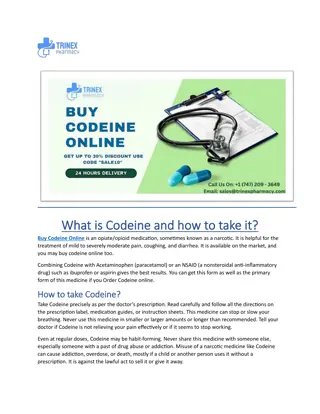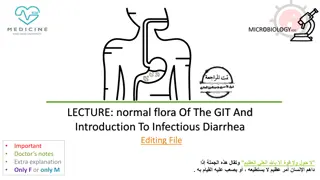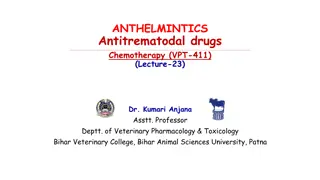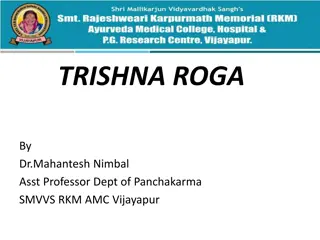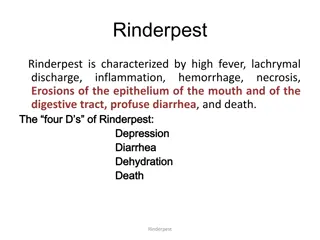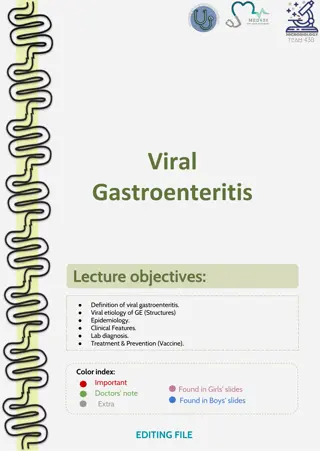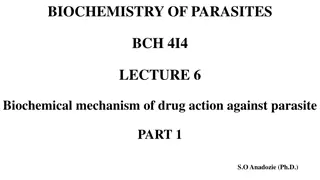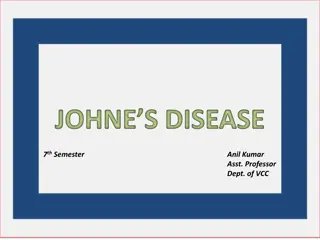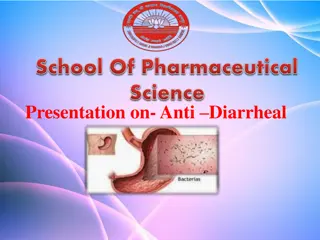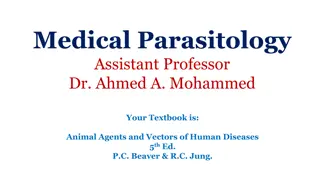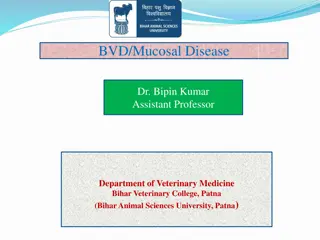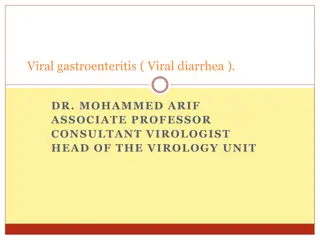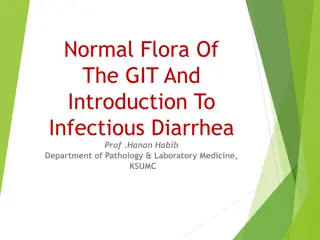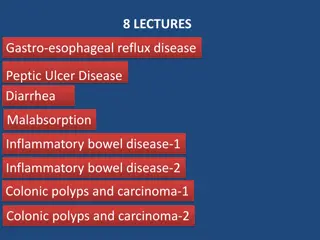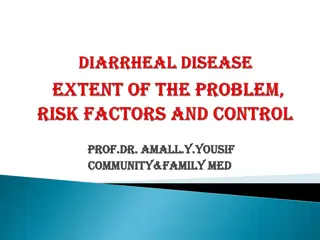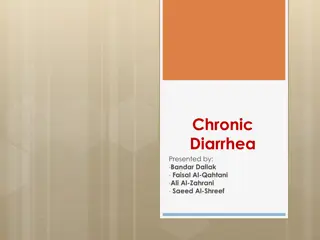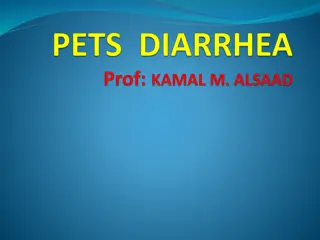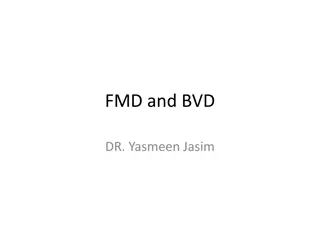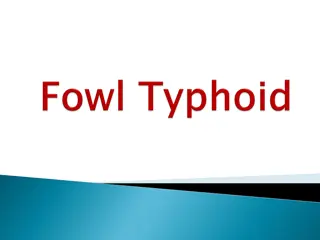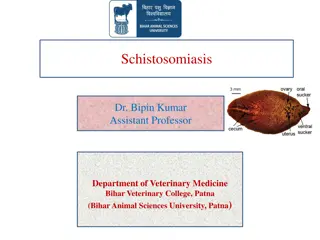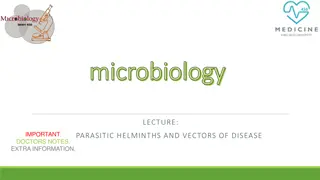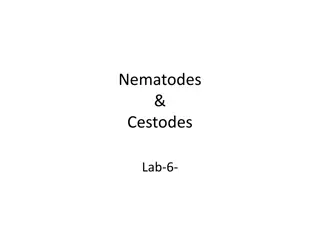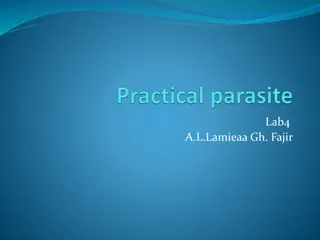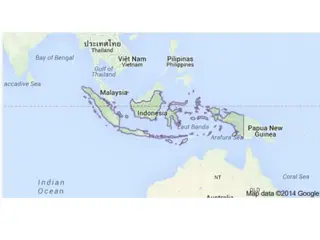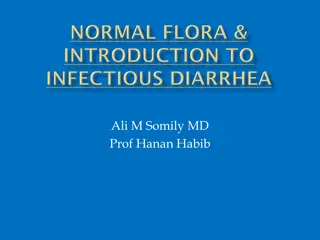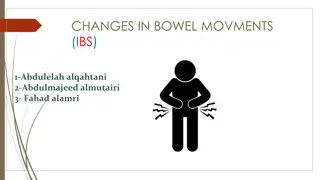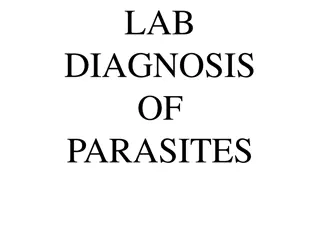Clinicopathological Conference - Medical Case Presentation Under Supervision of Prof. Dr. Irfan Ahmed
Sabir Ali, a 42-year-old male resident of Sadiqabad, presented with a month-long history of vomiting, decreased urine output, and altered consciousness. Known case of asthma, he experienced abdominal pain, diarrhea, and weight loss. Admitted for oliguria and pedal edema, he underwent hemodialysis. N
0 views • 30 slides
What is Codeine and how to take it ???
Buy Codeine Online is an opiate\/opioid medication, sometimes known as a narcotic. It is helpful for the treatment of mild to severely moderate pain, coughing, and diarrhea. It is available on the market, and you may buy codeine online too. Combining Codeine with Acetaminophen (paracetamol) or an NS
1 views • 4 slides
Neonatal Diseases
Neonatal and postnatal diseases in livestock, with a focus on perinatal, neonatal, and postnatal stages. It covers common classifications, causes, and risk factors associated with these diseases, particularly focusing on neonatal diarrhea (Calf Scour). The content delves into noninfectious and infec
0 views • 33 slides
Understanding Normal Flora of the Gastrointestinal Tract & Infectious Diarrhea
Normal flora in the gastrointestinal tract play a crucial role in maintaining health, but can also cause disease in certain conditions. This lecture covers the common flora in the GIT, their role in diseases, various types of acute diarrheal illnesses, epidemiology, and management of bacterial agent
1 views • 26 slides
Understanding Antitrematodal Drugs and Their Applications in Veterinary Medicine
Fascioliosis caused by F. hepatica is a common concern globally, impacting livestock health and economy. Antitrematodal drugs play a crucial role in combating parasitic infections like fascioliosis. One such drug, Carbon tetrachloride (CCl4), has been effective in treating F. hepatica due to its act
0 views • 33 slides
Understanding Trishna Roga: Causes, Symptoms, and Treatment
Trishna Roga, or excessive thirst, is a condition characterized by a strong desire for water due to dehydration. It can be caused by factors like vomiting, diarrhea, and excessive sweating. This article discusses the etiology, symptoms, and traditional treatment methods of Trishna Roga as per Ayurve
1 views • 19 slides
Mystery Case Study: 75-Year-Old Male with Fever and Altered Mental Status
A 75-year-old male with a history of multiple animal exposures presented with fever, altered mental status, headache, and diarrhea. Physical exam revealed vital signs within normal limits, and labs showed various results including negative infectious disease workup but pending further tests. Imaging
0 views • 11 slides
Understanding Rinderpest: Symptoms, Transmission, and Host Range
Rinderpest is a viral disease characterized by high fever, lachrymal discharge, inflammation, erosions of the mouth, and diarrhea, leading to death. The disease affects cloven-hoofed animals, with cattle and water buffalo being most susceptible. Transmission occurs through aerosol vectors and ingest
0 views • 60 slides
Overview of Viral Gastroenteritis: Etiology, Epidemiology, Clinical Features, Diagnosis, and Treatment
Viral gastroenteritis is an inflammation of the gastrointestinal tract primarily affecting the stomach and small intestine, leading to symptoms like acute diarrhea and vomiting. It can be caused by various infectious agents such as Rotavirus, Adenovirus, Caliciviruses, Astrovirus, Coronavirus, Torov
1 views • 7 slides
Understanding Biochemical Mechanisms of Drug Action Against Parasites
Parasitic protozoa cause devastating diseases in humans and animals, and chemotherapy is the primary defense. Drug resistance is a challenge, and prevention is crucial. Modern tools aid in studying genetic and biochemical aspects, targeting the parasite selectively. Drugs act by interfering with spe
1 views • 15 slides
Understanding Johne's Disease in Ruminants: Causes, Transmission, and Clinical Findings
Johne's Disease, caused by Mycobacterium paratuberculosis, is a chronic bacterial infection affecting the lower intestinal tract of ruminants. It is characterized by chronic diarrhea and emaciation, mainly seen in mature animals. The mode of transmission includes contaminated food/water, intrauterin
0 views • 12 slides
Understanding Anti-Diarrheal Agents and Their Mechanisms
Diarrhea is a common gastrointestinal issue characterized by increased bowel movements and abdominal discomfort. This presentation delves into the causes and types of diarrhea, including acute and chronic forms. It also explores the various classes of anti-diarrheal medications and their mechanisms
0 views • 23 slides
Understanding Parasitic Relationships in Medical Parasitology
Medical Parasitology delves into the intricate relationships between parasites and their hosts, encompassing symbiosis, mutualism, commensalism, and parasitism. The success of a parasite hinges on achieving a delicate balance with its host, avoiding expulsion or harm. Various types of parasites are
0 views • 12 slides
Understanding Anthelmintics: Drug Therapy for Parasitic Worm Infections in Veterinary Medicine
Anthelmintics are essential drugs to combat parasitic worm infections in animals. They work either by killing (vermicide) or expelling (vermifuge) the worms, reducing worm burdens and controlling infections. This comprehensive overview covers different aspects of anthelmintics, including their prope
2 views • 34 slides
Understanding Bovine Virus Diarrhea and Mucosal Disease in Cattle
Bovine Virus Diarrhea (BVD) and Mucosal Disease (MD) are two clinically distinct yet interconnected syndromes in cattle caused by Pestivirus. While originally thought to be separate, they share a common viral etiology. BVD can lead to persistent infections, while MD is sporadic, progressive, and fat
0 views • 14 slides
Understanding Viral Gastroenteritis: Causes, Symptoms, and Transmission
Viral gastroenteritis, commonly known as viral diarrhea, is a prevalent infection affecting mainly infants and young children. The disease is self-limiting, with symptoms like diarrhea, vomiting, and abdominal pain. Key viral etiologies include Rota viruses, Astroviruses, Norovirus, and Enteric aden
0 views • 19 slides
Overview of Giardia lamblia Parasite and Giardiasis Disease
Giardia lamblia, also known as Giardia intestinalis, is a flagellated parasitic microorganism that causes giardiasis by colonizing the small intestine. It infects humans, cats, dogs, and birds, and is a common parasitic human disease globally. Giardiasis, popularly known as beaver fever, can lead to
0 views • 12 slides
Understanding the Normal Flora of the Gastrointestinal Tract and Infectious Diarrhea
Explore the common normal flora of the gastrointestinal tract (GIT) and how they play a role in health and disease, specifically focusing on infectious diarrhea. Learn about different types of acute diarrheal illnesses, epidemiology, host defenses against GI infections, and the pathogenesis of bacte
0 views • 38 slides
Understanding Diarrhea: Causes, Classification, and Significance
This informative content delves into the physiology of fluid in the small intestine, defines diarrhea, and outlines its various types and common causes. It emphasizes the importance of addressing diarrhea promptly to prevent dehydration and electrolyte imbalances, especially in children, as it remai
3 views • 52 slides
Immune Responses to Parasitic Infections and Evasive Strategies by Protozoan and Helminth Parasites
Parasitic infections pose complex challenges to the immune system due to the diverse nature of parasites, including protozoans and helminths. Protozoan parasites move between arthropod vectors and mammalian hosts, requiring both humoral and cell-mediated immune responses. Meanwhile, helminths, as mu
0 views • 15 slides
Understanding Feco-Oral Diseases and Diarrhea Transmission
Feco-oral diseases, primarily transmitted through the fecal-oral route, remain a significant global health concern, especially affecting children under 5 and the elderly. Diarrhea, characterized by WHO as three or more watery stools in 24 hours, poses a substantial burden, with infectious agents cau
0 views • 46 slides
Overview of Amoebae: Parasitic and Free-Living Varieties
Various types of amoebae, including parasitic Entamoeba histolytica and harmless commensal amoebae, are discussed in terms of their morphology, epidemiology, pathogenesis, clinical presentation, diagnosis, treatment, and habitats, such as the large intestine and water sources. Pathogenic free-living
0 views • 9 slides
Understanding Chronic Diarrhea: Causes and Consequences
Chronic diarrhea is characterized by persistent loose, watery stools lasting more than 14 days. The condition can be caused by various factors such as osmotic, secretory, inflammatory, or motility disorders. In developing countries, it often follows acute infections, while in developed countries, un
0 views • 71 slides
Understanding Diarrhea: Causes, Symptoms, and Pathophysiology
Diarrhea is a common symptom that can be caused by various factors such as viral, bacterial, parasitic infections, dietary changes, drugs, systemic diseases, and intestinal obstructions. It can lead to dehydration and other serious complications if not treated promptly. The pathophysiology of diarrh
0 views • 15 slides
Understanding Foot-and-Mouth Disease (FMD) and Bovine Viral Diarrhea (BVD)
Foot-and-mouth disease (FMD) is a highly contagious animal disease affecting cloven-hoofed animals, while Bovine Viral Diarrhea (BVD) is a serious cattle disease caused by the BVD virus. FMD is not transmissible to humans and is caused by different strains of Aphthovirus. Symptoms of FMD include ves
0 views • 12 slides
Understanding Fowl Typhoid in Domestic Birds
Fowl Typhoid is a septicemic disease affecting domestic birds, characterized by acute and chronic phases, enlarged spleen, bronzy colored liver, and diarrhea. It is caused by Salmonella gallinarum and primarily affects young and adult chickens. The disease has a short incubation period of 4-5 days,
0 views • 7 slides
Trends in Parasitic Copepod Infection Among Juvenile Salmonids in WVP Reservoirs Study
Study conducted by the Oregon Department of Fish and Wildlife researchers to investigate trends in parasitic copepod infection among juvenile salmonids in WVP reservoirs. The study focuses on the prevalence and intensity of infection on the gills, comparing infection levels between stream-rearing an
0 views • 12 slides
Overview of Schistosomiasis and Fascioliasis in Veterinary Medicine
Schistosomiasis and Fascioliasis are important parasitic diseases affecting animals, particularly ruminants and horses. Schistosomiasis, caused by Schistosoma species, can lead to severe symptoms such as diarrhea, weight loss, anemia, and eosinophilia. On the other hand, Fascioliasis, caused by Fasc
0 views • 10 slides
Overview of Bovine Viral Diarrhea Virus (BVDV)
Bovine Viral Diarrhea Virus (BVDV) is an RNA virus belonging to the Pestivirus genus in the Flaviviridae family. It is classified into BVDV-1 and BVDV-2 genotypes with distinct biotypes. BVDV is a significant infectious disease in the livestock industry worldwide, with high prevalence and clinical c
0 views • 14 slides
Understanding Infectious Diseases: Approach, Prevention, and Viral Agents
Infectious diseases play a significant role in public health, with a focus on antibiotic stewardship, community-acquired and healthcare-associated infections, as well as various bacterial, viral, fungal, and parasitic agents. Specific topics include the prevention of infectious diseases, with a deta
0 views • 18 slides
Understanding Parasitic Helminths and Disease Vectors in Microbiology
Explore the world of parasitic helminths and disease vectors in microbiology. Learn about the classification of parasites, the life cycle of Ascaris lumbricoides, and the role of arthropods as agents and vectors of diseases in humans. Discover the characteristics of the three main groups of parasiti
0 views • 18 slides
Understanding Parasitic Helminths and Arthropod Vectors of Diseases by Dr. Mona Badr
This educational material delves into the classification, morphology, and life cycles of parasitic helminths, focusing on the roundworm Ascaris lumbricoides. It also explores the role of arthropods as agents and vectors of diseases in humans, providing insights into the location of helminthes in the
0 views • 28 slides
Understanding Apicomplexa: The Intriguing World of Parasitic Protozoa
Apicomplexa, a group of unicellular, spore-forming parasites, exhibit a complex life cycle involving sexual and asexual stages. Coccidia, a type of Apicomplexan parasite, cause diseases like coccidiosis in humans and animals. The disease spreads through contact with infected feces or tissue, leading
0 views • 36 slides
Parasitic Worms: Nematodes and Cestodes Overview
Explore the world of parasitic worms with a focus on Nematodes and Cestodes. Learn about Wuchereria bancrofti causing lymphatic filariasis and Echinococcus species leading to hydatid disease. Discover the transmission, laboratory diagnosis, treatment, and clinical aspects associated with these patho
0 views • 12 slides
Understanding Parasitic and Non-Parasitic Materials in Feces Examination
When examining feces for parasites, it's crucial to differentiate between parasitic material, non-parasitic material, and pseudoparasites. Recognizing parasite eggs and cysts based on their shape and size is essential for accurate identification. Additionally, being aware of non-parasitic materials
0 views • 7 slides
Study on Using MLIL Model to Replace RIL for Studying Bacterial Diarrhea
Shigellosis, a diarrheal disease prevalent in developing countries, lacks an effective vaccine. This study aims to assess the protective capability of S. dysenteriae sub-unit pili proteins using the MLIL method. Mice were immunized with different protein variants, and the results indicate potential
0 views • 16 slides
Understanding Acute Diarrheal Illness and Gastrointestinal Infections
Acute diarrheal illness is a common issue globally, leading to significant morbidity and mortality. This lecture covers the types of acute diarrhea, host defenses, pathogens like E. coli, Campylobacter, and Yersinia, and their management. It also discusses microbiological diagnosis methods, food poi
0 views • 30 slides
Understanding Irritable Bowel Syndrome: Symptoms, Diagnosis, and Management
Define constipation and diarrhea, discuss the definition, etiology, and classification of IBS, explain how to diagnose IBS, list alarm symptoms and differential diagnosis, provide a management plan and follow-up, and recognize when to refer to a specialist. People with irritable bowel syndrome may s
0 views • 35 slides
Laboratory Diagnosis of Parasites: Methods and Clinical Specimens
Laboratory diagnosis of parasitic infections involves techniques such as demonstration of parasites, immunodiagnosis, and molecular biological methods. Clinical specimens for diagnosis include blood, urine, genital specimens, sputum, and tissue biopsy/aspiration. Chyluria, a condition with milky whi
0 views • 24 slides
Understanding Giardia: Morphology, Life Cycle, and Pathogenesis
Giardia is a protozoan parasite that causes chronic diarrhea in various hosts, including humans and animals. This parasite has unique morphology with trophozoite and cyst stages. Its life cycle involves direct reproduction through binary fission and transmission through contaminated food or water. G
0 views • 19 slides

